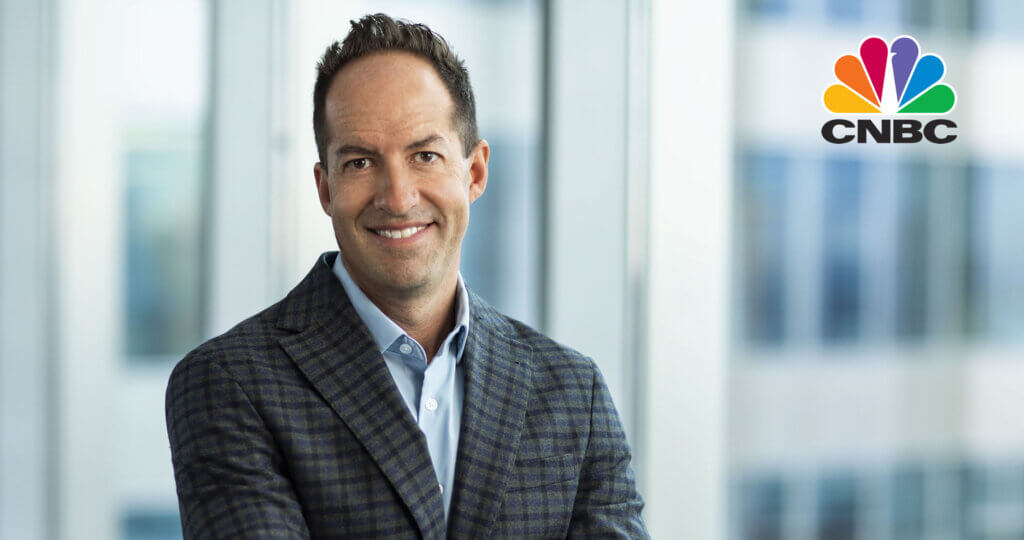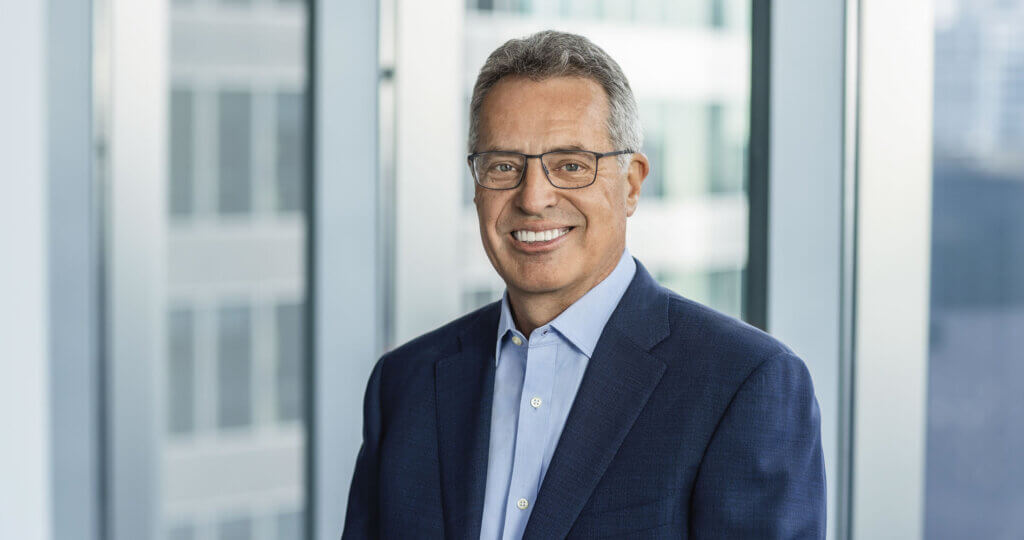When I studied stock market history in college, I used to think that it would have been so easy to be an investor in the 1950s. The math behind dividend discount models hadn’t yet been widely accepted, and most investors thought that, because equities were riskier than bonds, they needed to have higher yields. Of course, we have learned that equities require a higher expected return than bonds, but that expected growth is a very large component of that return. When equities yield less than bonds, they still usually have the higher expected returns. If only we could again have the opportunity they had in the ’50s! Be careful what you wish for.
At Oakmark, we are long-term investors. We attempt to identify growing businesses that are managed to benefit their shareholders. We will purchase stock in those businesses only when priced substantially below our estimate of intrinsic value. After purchase, we patiently wait for the gap between stock price and intrinsic value to close.
Today, we have the opportunity to buy high-quality stocks with yields that are much higher than bond yields. So are investors tripping over themselves to take advantage? Far from it. Investors continue to decrease their investment in large-cap equities. The headlines read “Buy and Hold Is Dead,” “U.S. Investing: Are the Best Times Over?” and “Bury Buy and Hold.” The newest fear seems to be volatility. The market is up 2% one minute and down 2% the next. Investors see the short-term results as being like a casino and they are scared. The past two months have certainly been full of large day-to-day price swings, but how unusual is that?
The Oakmark Fund was started in 1991, so we have 20 years of history. During those 20 years, the average daily volatility of the S&P 500 (the difference between the daily high and low) has been 1.3%. From July 29 to September 16 of this year, every single day experienced above-average volatility. Over those 34 trading days, we saw many stories with quotes from investors who said they had never before experienced anything like it.
One of the advantages of managing money for a long time is that you gain perspective, and thus realize that often what is termed unprecedented has occurred many times before. We looked back over Oakmark’s history and found seven periods where above-average daily volatility persisted for over a month. The longest of those streaks went on for 87 consecutive trading days. And despite those periods of excessive volatility, the 20-year returns for both the Oakmark Fund and the S&P 500 have been quite acceptable, which suggests that short periods of volatility are not predictive of negative future returns.
I wrote an article for our 20th anniversary that is reprinted below as part of this letter. As practitioners of buy-and-hold investing, I hope the story of how we have successfully invested over the past 20 years gives you the courage to block out the “buy and hold is dead” voices and allows you to take advantage of what we believe is a generational opportunity for equity investors.
Oakmark Fund at 20: Looking Back, Looking Ahead
In 1991, at a gathering of the partners of Harris Associates, several of us put forth the idea of starting a mutual fund that would use the same long-term, value-investing approach we had successfully employed in our high-net-worth client accounts. As we listed our reasons to do this, the one that was most convincing to our partners was that we wanted to invest our personal money in the fund. And in August of 1991, the Oakmark Fund was started.
Last month we celebrated Oakmark’s 20th anniversary. Though a lot has changed in 20 years, including growing into a family of seven successful Funds, the things that matter most to our shareholders remain unchanged. We are still long-term value investors. We still have the same goal of achieving positive real returns that compound at a higher rate than an index fund. We still manage the Funds to maximize after-tax returns. We are still committed to industry-leading shareholder communications. And all of our Fund managers still have personal investments in the Funds they manage that represent the overwhelming majority of their equity investments.
As we did 10 years ago, on the Fund’s 10th anniversary, let’s take advantage of this opportunity to look back at our long-term record. When we started the Oakmark Fund, there were just over 2,000 mutual funds that invested primarily in domestic equities. Today there are nearly 10,000. Of the funds we competed with in 1991, only 634 remain in business. So more than two-thirds of the funds open in 1991 have closed their doors and, as a result, only 6% of the funds available today have 20-year track records. We’ve always discouraged making decisions based on results from short time periods. A given quarter, year or even several years can reflect unusual luck or an unusual market environment. Longer time periods have the benefit of smoothing out the periods of unusually good or bad luck, and unusually strong or weak markets. The longer the track record, the less influenced it is by serendipity. For investors trying to assess mutual fund track records, we believe the longer the better.
Average Annual Total Returnsas of (09/30/11)
| 10-year | 4.13% |
| 5-year | 0.93% |
| 1-year | -0.67% |
| Expense Ratio as of 9/30/10 was: | 1.11% |
Past performance is no guarantee of future results. The performance data quoted represents past performance. Current performance may be lower or higher than the performance data quoted. The investment return and principal value vary so that an investor’s shares when redeemed may be worth more or less than the original cost. To obtain the most recent month-end performance data, view it here.
We’re pleased with how our results stack up for the Oakmark Fund’s first 20 years. During that time, the S&P 500 produced a compound return of 8% per year. Given relatively low inflation, averaging about 3% per year, that’s a pretty respectable real return. An investor who owned the S&P 500 for the past 20 years would now have about five times his initial investment. Adjusted for decreased purchasing power, that’s still a triple. Over that same time period, an investor in the Oakmark Fund achieved a 12% annual return, which compounded to 10 times the initial investment. Adjusted for inflation, that equates to six times the purchasing power of the original investment, compared to three times for the S&P.
For its first 20 years, Morningstar ranked Oakmark as the second best performing fund of the 139 funds in its large-blend category and Lipper ranked it number one among its 87 large-cap core funds. Not too shabby.
So what should investors expect as Oakmark embarks on its second 20 years? We obviously can’t guarantee a continuation of exceptional investment returns. The output of our process is subject to a great deal of uncertainty, and mutual fund managers aren’t allowed to make predictions about their future returns. We can, however, talk about the inputs to our process.
We will continue to use the same investment approach. Over the past two decades, we attempted to identify companies that were selling at large discounts to their intrinsic value, where that value was expected to grow with time, and where managements were committed to maximizing long-term per-share value. Why was that approach successful? Because investors tended to be emotional, tended to overreact to news and tended to focus on much shorter time periods than we did. As we look forward, we see no reason why investor actions should differ from the past. If anything, investors today look at even shorter time periods, react more quickly to news and rely more heavily on price momentum than they did 20 years ago. That results in stocks trading even further from their long-term values. Our investment approach should continue to create at least as many bargain purchase opportunities as it did in the past.
We will continue to rely on an exceptionally talented team of investment professionals. Twenty years ago, we believed that our people gave us an important edge. Our analysts developed their belief in value investing before we hired them. Value is all we do at Oakmark, so we have only hired investors who were already committed to the value philosophy. Our analysts have always been generalists, which means we didn’t create artificial boundaries that prevented them from researching and recommending the stocks they believed were most attractive. And unlike the many fund companies that move their most successful analysts to “more important” responsibilities, Oakmark has always used a compensation system that allowed successful analysts to be among our firm’s highest compensated employees. As we start our third decade, it looks like we operate as differently from our competitors as ever. Most fund companies continue to offer a mix of value and growth products, so they prefer hiring analysts who don’t have conviction about a specific investment approach, who cover just one industry and who will view that job as a stepping stone to a different job. Our successful first 20 years has made it easier to attract top value-investing talent; in fact, they now often come looking for us. We believe that our people will continue to give us at least as large an advantage as they did in the past.
We can’t promise that the next 20 years will be as good as the first. But the reasons that led us to believe we could start a successful fund, and eventually a fund family, are at least as compelling today as they were 20 years ago. We want to thank all of you who have joined us on the first leg of this exciting journey and say to you, as well as to others that are new to the Fund, that we believe the path ahead looks to have at least as much opportunity as the path we’ve already traveled.
The S&P 500 Index is a broad market-weighted average of U.S. blue-chip companies. This index is unmanaged and investors cannot actually make investments in this index.
Morningstar is an independent monitor of mutual fund performance. Morningstar rankings reflect the total return percentile rank within each fund’s specified Morningstar Category. The highest (or most favorable) percentile rank is 1 and the lowest (or least favorable) percentile rank is 100. Rankings are subject to change and are for the share class indicated. The Oakmark Fund ranked #107 out of 139, #12 out of 139, #26 out of 139, and #3 out of 139 funds in the large blend category for one, five, and ten years, and since inception, respectively, as of 7/31/11. The Oakmark Fund ranked #2 out of 139 funds in the Large Blend category as of 8/5/11.
Lipper, Inc. is an independent monitor of mutual fund performance. Rankings are based on fund performance in a respective category. The Oakmark Fund ranked #725 out of 1076, #57 out of 812, #49 out of 489, and #1 out of 87 in the large cap core category for one, five, and ten years and since inception, respectively, as of 7/31/11.
The discussion of the Funds’ investments and investment strategy (including current investment themes, the portfolio managers’ research and investment process, and portfolio characteristics) represents the Funds’ investments and the views of the portfolio managers and Harris Associates L.P., the Funds’ investment adviser, at the time of this letter, and are subject to change without notice.







